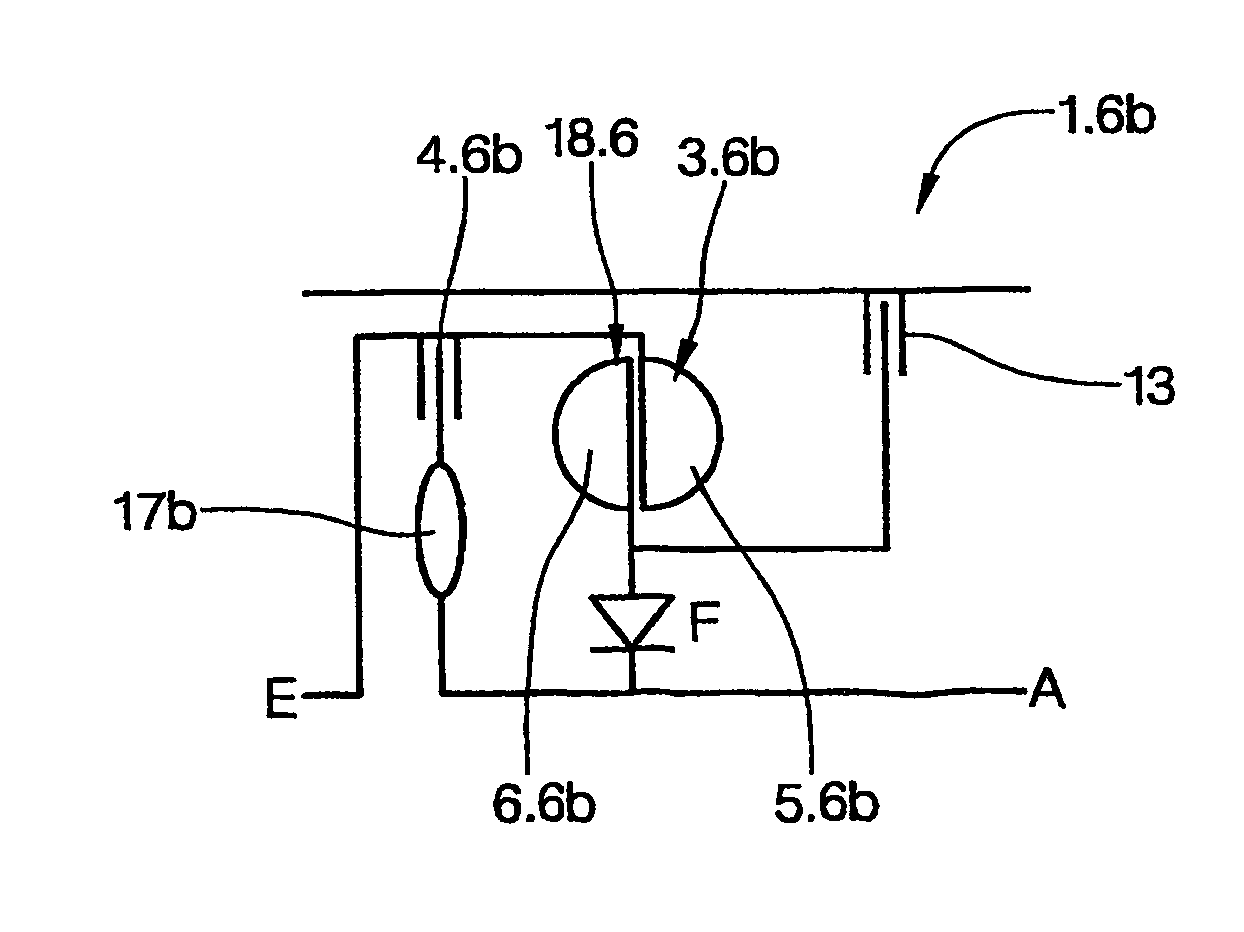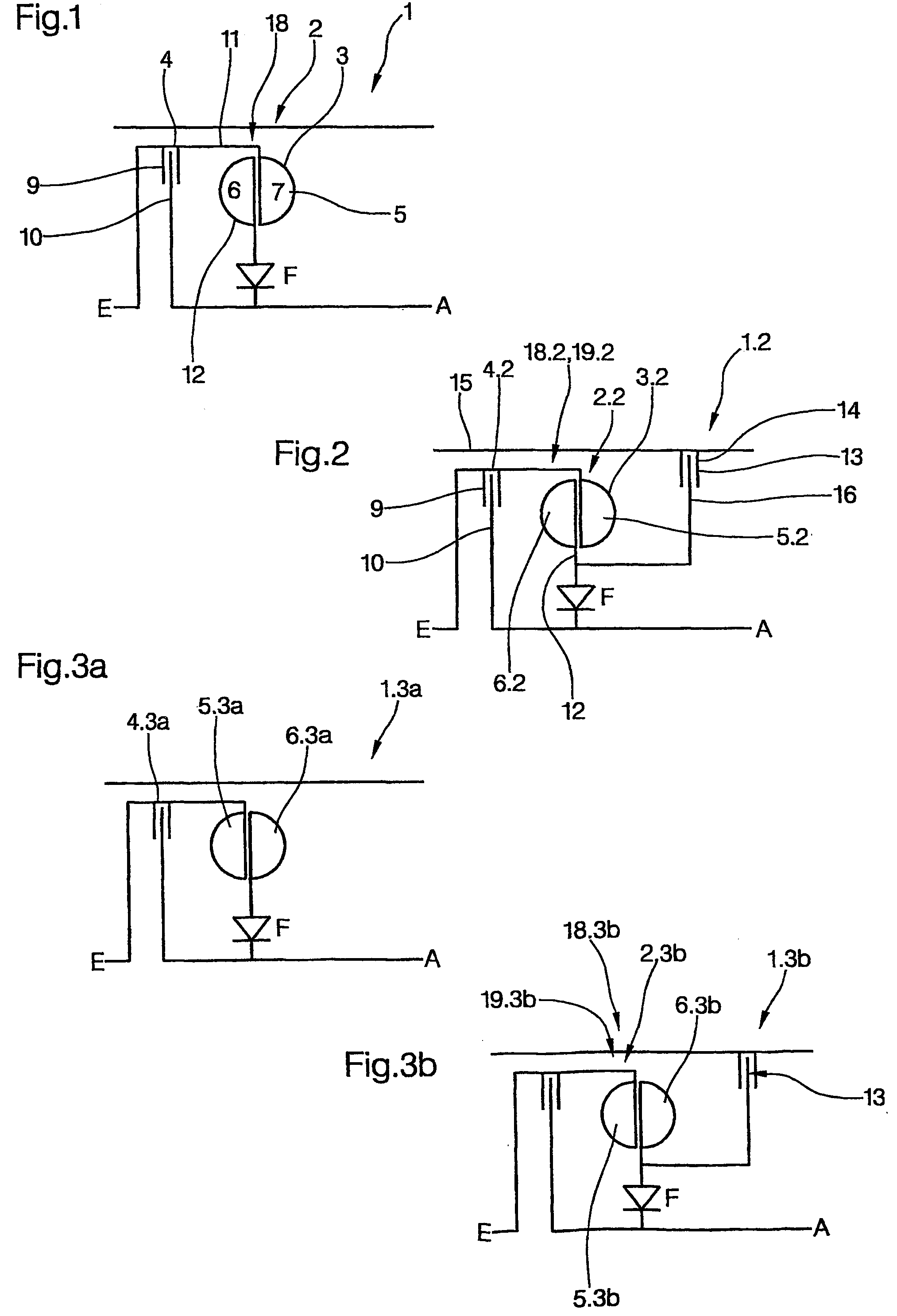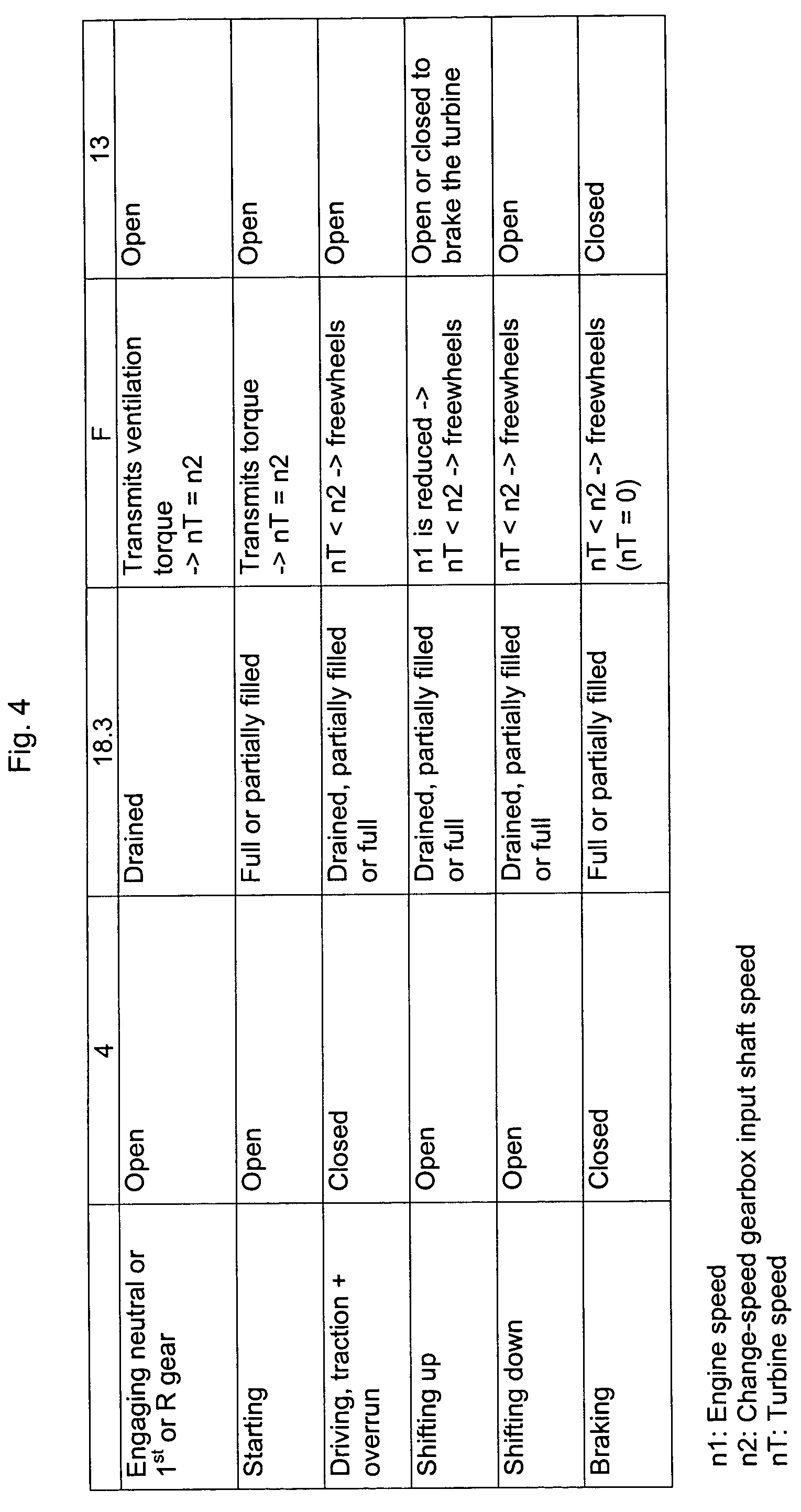Starter unit
a starter unit and multi-functional technology, applied in the direction of fluid couplings, gearings, couplings, etc., can solve the problems of increased slippage, low service life of the starter element, and the coupling device is then subject to increased wear, so as to achieve low design and control technology effort, low overall length, and easy integration into the drive system
- Summary
- Abstract
- Description
- Claims
- Application Information
AI Technical Summary
Benefits of technology
Problems solved by technology
Method used
Image
Examples
Embodiment Construction
[0037]FIG. 1 is a schematic simplified representation of the basic construction of a starter unit 1 according to the invention, comprising a starter element 2. The starter unit 1 comprises a hydrodynamic component 18 in the form of a hydrodynamic coupling 3 and a bypass clutch 4. The hydrodynamic coupling 3 and the bypass clutch 4 are connected in parallel. The hydrodynamic coupling 3 comprises at least one primary wheel acting as a pump wheel 5 and a secondary wheel acting as a turbine wheel 6, which together form a toroidal working area 7. The bypass clutch 4 can be designed in one of many ways, but preferably in the form of a disk clutch, in particular a multiple disk clutch. This comprises a clutch input disk 9 and a clutch output disk 10, which can be brought into at least indirect active frictional contact with one another, i.e. either directly or via further disk-shaped intermediate elements, which form frictional pairs with one another. Furthermore, the starter unit 1 compri...
PUM
 Login to View More
Login to View More Abstract
Description
Claims
Application Information
 Login to View More
Login to View More - R&D
- Intellectual Property
- Life Sciences
- Materials
- Tech Scout
- Unparalleled Data Quality
- Higher Quality Content
- 60% Fewer Hallucinations
Browse by: Latest US Patents, China's latest patents, Technical Efficacy Thesaurus, Application Domain, Technology Topic, Popular Technical Reports.
© 2025 PatSnap. All rights reserved.Legal|Privacy policy|Modern Slavery Act Transparency Statement|Sitemap|About US| Contact US: help@patsnap.com



